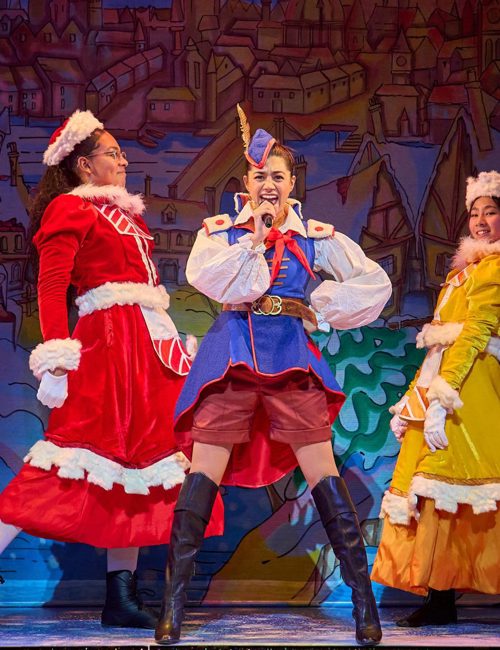A coming-of-age tale set in a haunted house? The Television Workshop's latest play has us sold...

James Gunn originally pitched the 2002 Scooby-Doo film as an R-Rated version of the children’s cartoon - one which the studio quickly vetoed, opting for the more commercially successful kids’ edition. If Gunn’s vision had gone ahead though, I imagine it would strongly resemble TV Workshop’s The House on the Edge of Innocence. Following five teenage ghost hunters, the play grapples with young adulthood, queerness, and identity, with enough crudeness to make Melvin Burgess proud.
The House on the Edge of Innocence tells the story of a group of friends trapped inside Mendrick Manor, an insidious haunted house that tries to convince its victims to take their own lives. It is reminiscent of an episode of Buffy the Vampire Slayer, ‘Fear Itself’, in which a similar haunted house preys on the vulnerability of its inhabitants. Much like in the Buffy episode, Mendrick Manor tries to pit the friends against each other, realising they’re weaker without the support of the group.
The play has its fair share of jump scares and horror moments, but ultimately the story is about coming of age, as the house forces them to address their fears about growing up and changing friendships.
It’s fair to say that the play relies heavily on teenage movie tropes: the misunderstood bully, the closeted teen, the dumb blonde that’s actually smart. Nonetheless, it manages to grapple with teenage concerns, especially around the theme of endings and the ambiguity of the future.
The House on the Edge of Innocence is a story about choosing between despair and hope, the manor acting as a representation of the fears that already plague the group
The play feels very British, not in a Hugh Grant Love Actually way, but in a way that reminds you of secondary school. The cast are realistic in their portrayal of British teenagers, from the constant bragging about drinking and sex to swearing at the ghosts in Mendrick Manor. Harvey Thornhill-Smith and Kieran Burton are especially strong in their performances, playing Miller and Isaac, two best friends trying to navigate what a kiss means for their friendship. The queer storyline between the two is interesting, and their portrayal of complicated male friendships is genuinely moving to see.
The production becomes progressively darker as it goes on, growing in intensity as the house gets a stronger grasp on the characters; the heaviest scene appears three quarters through the play as Isaac (Kieran Burton) cradles his school bully (Jack Hayes) after the manor convinces him to commit suicide. The emotive scenes are made even more atmospheric by the sound design, which is flawless throughout.
Overall, The House on the Edge of Innocence is a story about choosing between despair and hope, the manor acting as a representation of the fears that already plague the group. As the five friends stand on the edge of adulthood and the unknown, they are faced with two paths: to be afraid of the future or to embrace it in all its uncertainty together.
We have a favour to ask
LeftLion is Nottingham’s meeting point for information about what’s going on in our city, from the established organisations to the grassroots. We want to keep what we do free to all to access, but increasingly we are relying on revenue from our readers to continue. Can you spare a few quid each month to support us?




